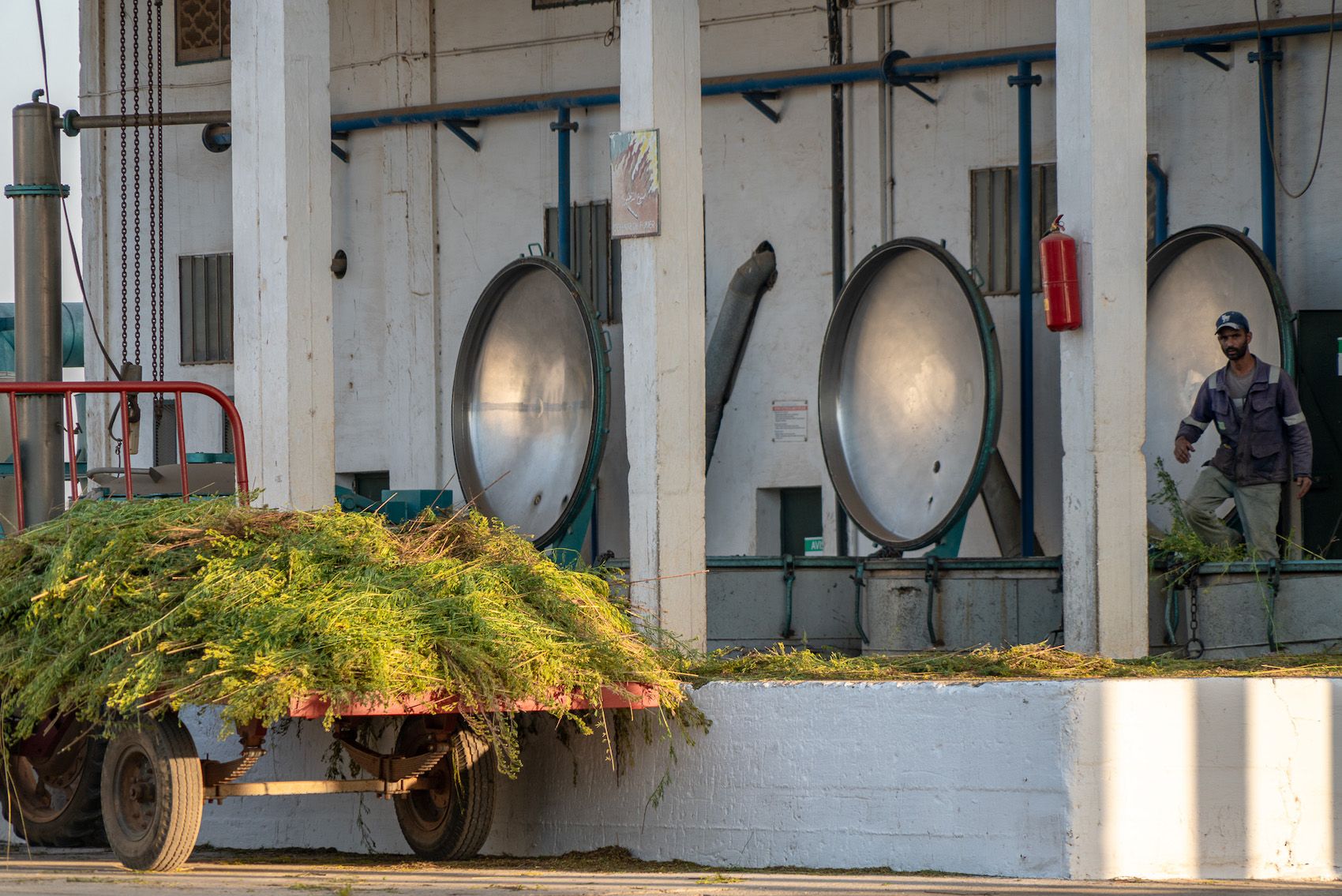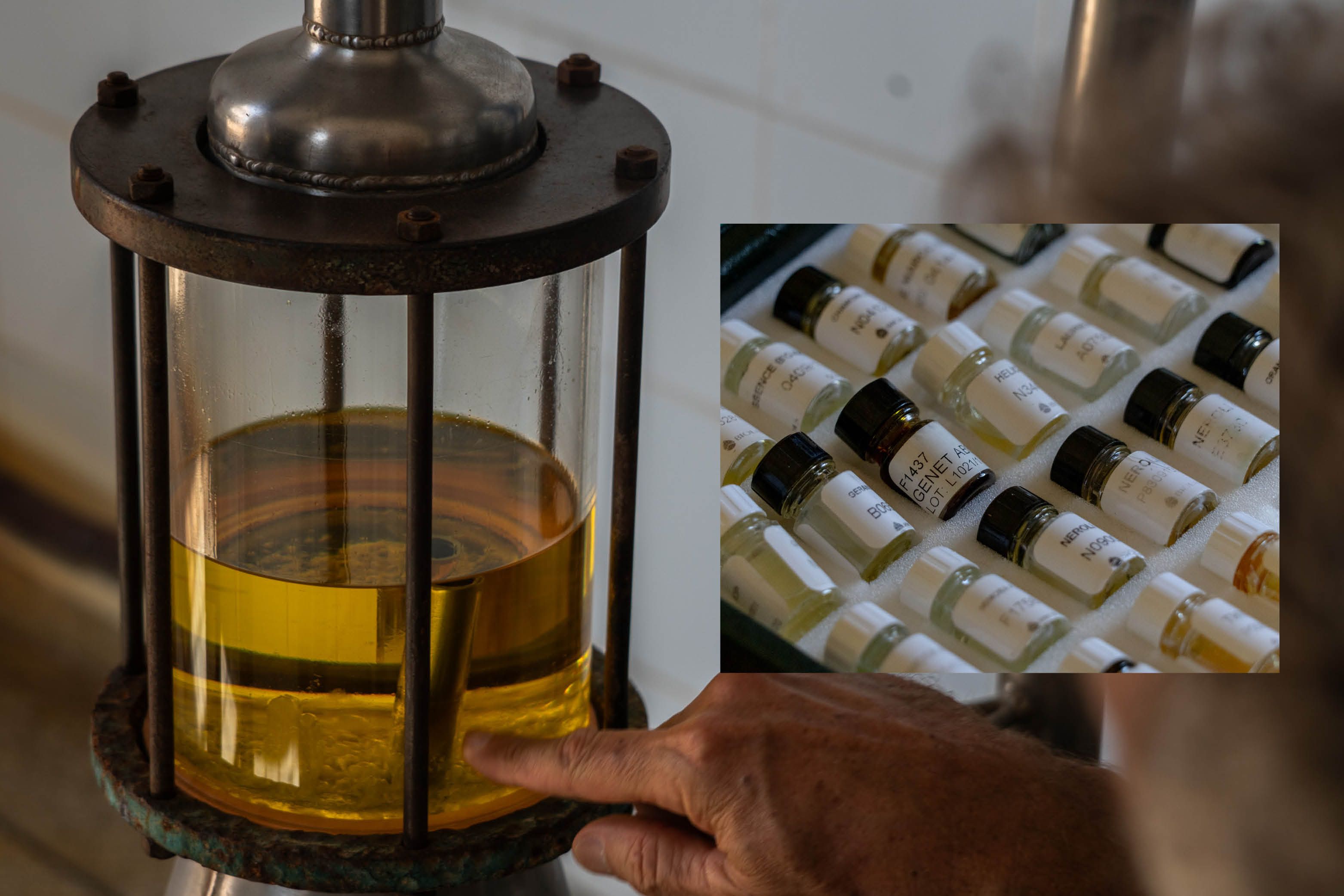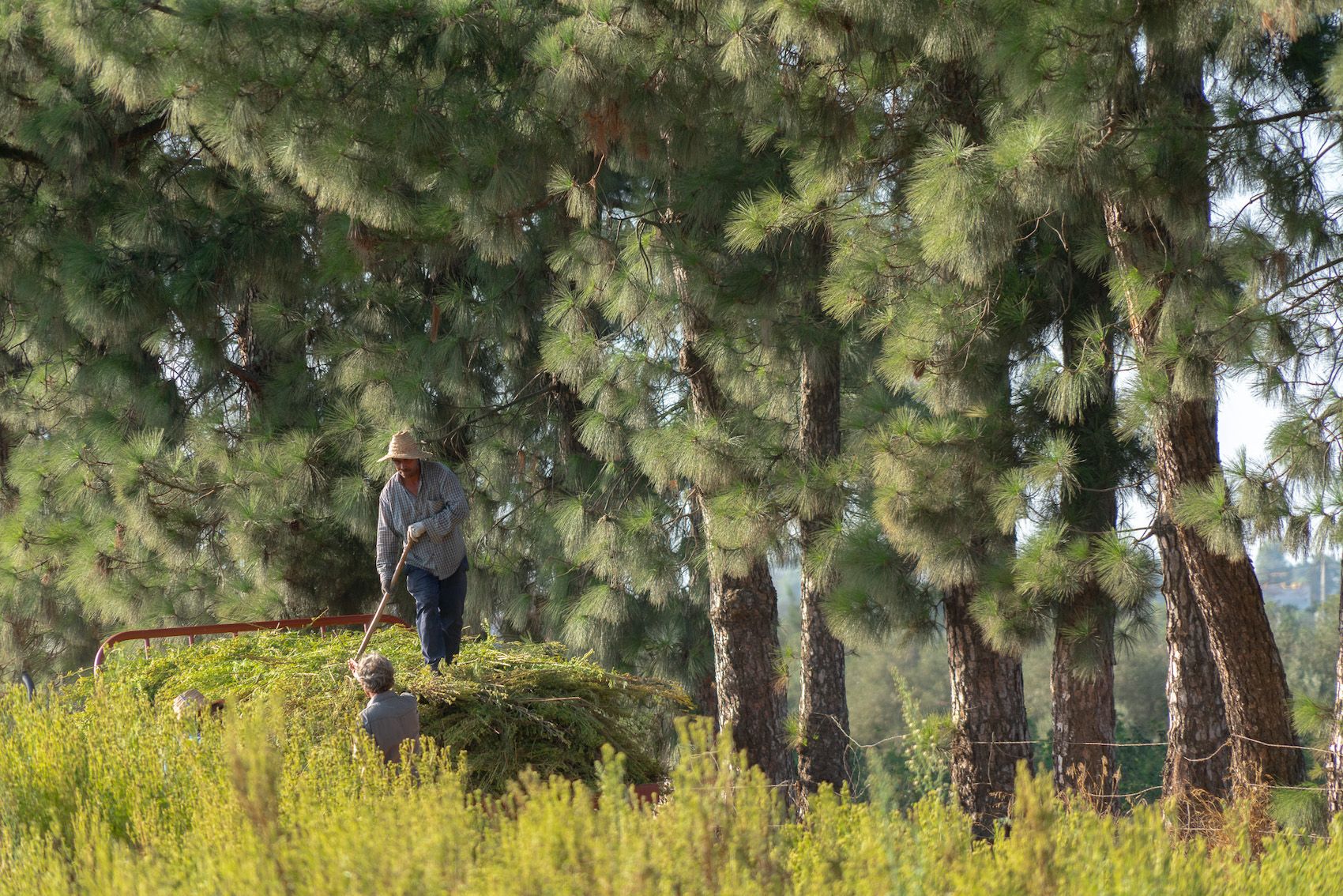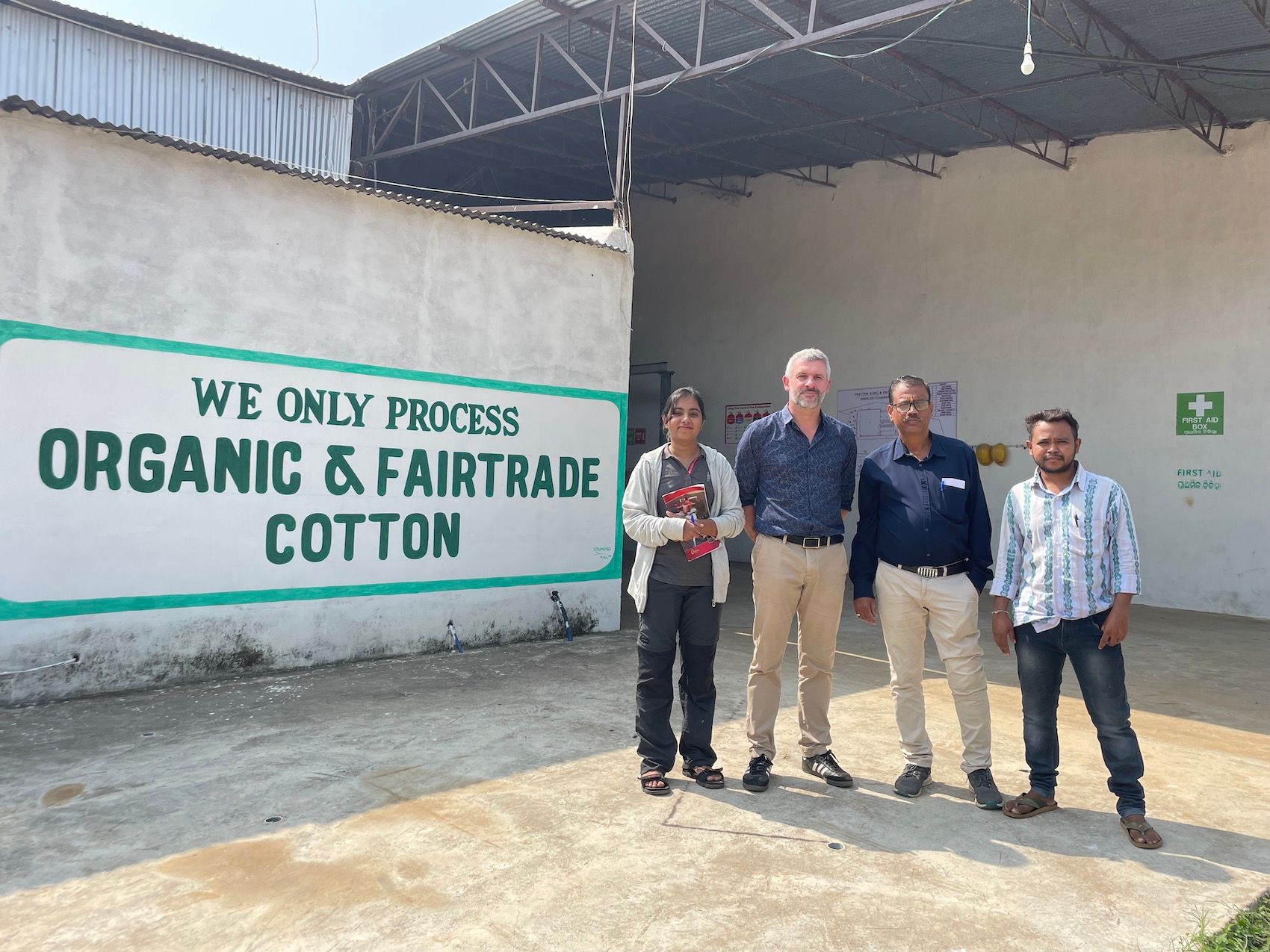While there is no fixed definition of regenerative agriculture, its goal is to enhance the ability of agricultural ecosystems to renew themselves—in other words, to help them thrive again. Within corporate value chains, Reforest'Action's regenerative agriculture projects address environmental, social, and economic challenges. These challenges are deeply interconnected: drought, flooding, extreme heat, soil salinization, fluctuating markets, and seed availability all threaten crop sustainability, putting the entire supply chain at risk. Our interventions aim to build long-term ecosystem resilience while maintaining the economic viability of our activities. “The idea behind a regenerative agriculture project is to create a balanced and sustainable model that generates alternative and complementary income while preserving the integrity of the agroecosystem,” explains Jean-Christophe, Project Manager at Reforest'Action. Reforest'Action's approach supports the continuation of existing agricultural production, the development of new crops within the same area, as well as the generation of positive environmental and social impacts. Achieving these outcomes requires the right approach.
Designing a regenerative agriculture project is a complex process with many variables. The goal is to identify ways to optimize the natural dynamics of the ecosystem. The feasibility of this optimization is evaluated during the planning and experimentation phases, which take place before field implementation and ensure the project's long-term sustainability. For Jean-Christophe, who is responsible for designing and implementing regenerative agriculture projects in tropical regions, the key is aligning the practical experience of farmers with the scientific framework: "Although our assessments, studies, and forecasts are grounded in scientific data and methods, the goal is to develop proposals tailored to the local context and approved by those most affected—the farmers. Without their full commitment, no transition is possible." This behind-the-scenes work follows a pragmatic approach, rooted in local realities and focused on delivering measurable benefits.
Understanding the Local Context: A Science-Based Approach
The main steps in designing a regenerative agriculture project are often grouped into what's known as the "feasibility study," a crucial first milestone. From a scientific perspective, this study assesses the project's overall viability and evaluates potential solutions. It covers key elements such as the goals to be achieved, potential challenges, an analysis of the farm and its environment, hypotheses to be tested, proposed actions, and the metrics for tracking progress. The feasibility study is summarized in a report that presents both the results of preliminary assessments and recommendations for possible solutions. However, behind this report lies a significant amount of groundwork, closely tied to the field and involving all stakeholders. “The feasibility study is about understanding the overall dynamics of the area to create a solid implementation plan,” explains Jean-Christophe. The success of a project is much more likely, and the positive impacts are maximized when a feasibility study is carried out early in the process.

Assessment of Key Factors
Once the project’s objectives are established, a detailed analysis of the local context is essential. Understanding how agricultural production operates, considering its environmental, social, and economic aspects, is a crucial step in project design. This helps us identify strengths and opportunities, as well as weaknesses and potential threats that need to be addressed. The first section of the feasibility study focuses on various assessments, or audits, grounded in scientific methodology. The specific factors examined depend on the project’s goals, but they typically include the following:
1. Farm Assessment: The project must be integrated into an existing production system. This is why farming practices, technical processes, and any transformation activities are assessed. The goal is to evaluate the farm's current sustainability and conservation levels, its capacity for adaptation, and any potential risks associated with changes in practices.
2. Ecosystem Assessment: By analyzing various aspects of the project area, we can gain an understanding of the socio-ecological dynamics that shape the environment in which the farm operates. This assessment focuses on the key pillars of a regenerative project: water, soil, biodiversity, and socio-economic factors. The results of these analyses help identify past and potential future climatic changes, characterize available resources, and pinpoint priority areas for restoration.
3. Value Chain Assessment: Reforest'Action works within companies' value chains, specifically focusing on the sourcing of raw materials for regenerative agriculture projects. This assessment involves conducting a market study of the agricultural production in the relevant region or country to highlight the economic potential of the project. The purpose is to guide the development of alternative, regenerative value chains that align market needs with production goals, ultimately fostering sustainable incomes and better conservation of natural resources.
These analyses can be conducted either in the field during short trips, sometimes referred to as audits, or remotely through a literature review. In both cases, strong collaboration among the various stakeholders is essential. This involves sharing knowledge between the agricultural supplier and Reforest'Action, the project developer. Time is also an important factor in these diagnostics. As Jean-Christophe notes, the goal of this preparatory phase is "to understand past dynamics to predict their evolution five, ten, or even twenty years into the future, over the lifespan of the project." Following a scientific methodology, establishing a baseline helps narrow down the regenerative models to be developed in the feasibility study, focusing on those best suited to the environment and current farming practices.
Perfume Flower Cultivation in Northwest Morocco
In Khémisset, northern Morocco, Reforest'Action is developing a regenerative agriculture project in partnership with a Parisian perfume house and its supplier of essential plant oils. In the face of growing climate challenges, the project's primary goal was to explore sustainable practices for cultivating perfume flowers.


The first step was to assess the farm's operations, identifying areas for improvement. We analyzed each stage of the flower-growing process for our client’s perfumes, including fertilization, seed preparation, and the technical steps involved (sowing, transplanting, hoeing, irrigation, and harvesting). Next, we reviewed the value chain for essential oil production, looking at distillation techniques (steam and solvent), energy needs, and the potential use of residual biomass*. Finally, an analysis of the ecosystem and local climate helped us evaluate how water scarcity impacts perfume flower production. Water stress in the region, largely due to a significant drop in rainfall, has directly affected water availability on-site, which in turn impacts irrigation. For example, the choice of species for agroforestry is based on this critical assessment, as only drought-resistant species will survive such conditions. As Jean-Christophe notes, the key challenge of this diagnostic phase is clear, though complex: “Here, the project is primarily about selecting plant species suited to the severely limited water resources, within the framework of essential oil production.”
*Biomass refers to organic plant or animal material that can be used as an energy source or soil enhancer. In this case, the plant residues left after distillation serve as a valuable source of biomass.


Validating Hypotheses: An Experimental Approach
Regenerative agriculture aims to both restore agricultural ecosystems and sustain economically viable yields. This holistic approach relies on experimentation and encourages learning and adaptation as key drivers of change.
Identifying Strategies to Be Tested in a Pilot Phase
After the findings, we move on to potential solutions. What strategies are Reforest'Action and the agricultural partner considering addressing the challenges identified, while aligning with the local context? The second part of the feasibility study focuses on identifying practical regenerative processes that could be implemented on-site, forming the foundation of the project design. These strategies are outlined as follows:
1. Hypotheses: Following a scientific approach, we start by developing a set of hypotheses aimed at identifying causal links—essentially, how the potential solutions could lead to positive outcomes. These hypotheses are then turned into scenarios, which are tested through field experiments during the initial "pilot phase."
2. Developing Scenarios (Levers): Next, we create a variety of scenarios using different agroecological techniques. These are tested to see which best supports the earlier hypotheses. The aim is to identify the most effective strategies, chosen for both their environmental benefits (ecosystem resilience, climate change adaptation) and their agronomic and socio-economic advantages (higher yields, product diversity, reduced inputs, increased income), ranging from the plot level to the landscape scale. Local stakeholders are involved to ensure their needs and priorities are factored into the decision-making process.
3. Monitoring Indicators: Each selected strategy is then tied to specific performance indicators that will measure its impact. While environmental strategies often provide quantitative data, others, like improvements in community or farmer well-being, may require more qualitative assessment.
4. Pilot Phase: The project starts with an experimental phase, which can last several years depending on the project. During this time, the chosen scenarios are tested on a small scale to determine if they are feasible and scalable before rolling them out on a larger scale. This phase is critical for fine-tuning solutions, determining actual costs, timelines, and evaluating the skill levels of project partners. In some cases, the feasibility study and the pilot phase happen simultaneously. This stage also helps expand our understanding of the region and its dynamics through hands-on experience. Success in the pilot phase is tracked using key indicators, which provide the foundation for measuring the project's long-term impact.
In practical terms, there are a variety of agroecological strategies that can be applied in a regenerative agriculture project. Reforest'Action helps its clients optimize their value chains by focusing on living systems, offering customized recommendations. We provide a wide range of techniques, including agroforestry within plots, planting tree and shrub borders, creating woodland islands, soil conservation practices, and using biochar. At its core, regenerative agriculture places a strong emphasis on soil restoration—a critical priority as 90% of the world’s soils are projected to be degraded by 2050.* Reforest'Action also aims to implement strategies at the landscape level, beyond the production system itself. For instance, restoring nearby forests to connect farms with continuous ecological corridors can lead to significant improvements in both production quality and the livelihoods of the communities that rely on it.
*FAO, Saving our Soils by all earthly ways possible, Highlighting some key achievements of the FAO-led Global Soil Partnership, Case Studies, 2022.
Organic Cotton Production in Eastern India
The production of synthetic fibers and fabrics is one of the world’s most polluting industries, negatively impacting both human health and the environment. For farmers, growing natural fibers like cotton in a sustainable and economically viable way remains a challenge. Since 2020, Kiabi has been committed to supporting forests, driven by the desire to make a difference where its business has the greatest impact. Wanting to take this commitment even further, the company recently turned to Reforest'Action for expertise, specifically within its cotton production chain in India. India is the world’s leading producer of organic cotton, and the project is being implemented with several of Kiabi's indirect suppliers, including the Pratima Organic Growers group, which represents over 9,000 cotton farmers and 10,000 hectares of organic or transitioning farms. In partnership with the growers' cooperative, the project has four main goals: to improve the economic viability of cotton farming, empower the farmers, promote ecological sustainability, and restore the ecological corridors that shape the landscape.
Launched in March 2022, this regenerative agriculture project in the central Indian states of Odisha and Madhya Pradesh entered a pilot phase in 2023, with the full feasibility study completed by Reforest'Action in 2024. Jean-Christophe explains: "This project in India perfectly illustrates the core goal of regenerative agriculture: building resilience in production systems in the face of climate change. It requires adapting to new scenarios projected through science and the work of the IPCC."


Assessment: The climate assessment of the region revealed longer drought periods, higher temperatures, a shorter monsoon season, and more intense rainfall. As a result, the area, located in the Tel River watershed, is facing water shortages that are affecting cotton crop irrigation. Other environmental challenges in the region include biodiversity loss, largely due to the clearing of the surrounding Tikhari forest reserve for agricultural purposes. The farmland involved in the project is organically certified, which provides a production framework with recommended practices, guidance on crop varieties, and farmer training. On a socio-economic level, farmers—most of whom rely on the cotton market for their livelihood—are struggling with worsening climate conditions that increase their vulnerability. Additionally, local communities face poor sanitary conditions, leading to a rise in serious diseases like malaria. Plastic pollution in the villages is also degrading the quality of drinking water and posing a threat to agricultural land.
Hypotheses and Strategies Considered: Agroforestry is already familiar to farmers in the region and offers a promising way to diversify crops, restore biodiversity, improve water infiltration in sandy and rocky soils, boost alternative income for farmers, and improve livelihoods in a reasonable timeframe. To support organic cotton cultivation, fruit and timber trees will be planted alongside the crops. The pilot phase, which started in June 2023, involves setting up agroforestry plantations in a test area. By 2024, additional strategies focused on soil conservation will be put in place. The project also includes a socio-economic element, providing farmer training and support with market access. Plans to improve hygiene in the surrounding villages are also part of this phase.

In conclusion, a regenerative agriculture project extends beyond just field implementation. The diagnostic and experimental phases, which shape the project's final design, follow a scientific approach that is as thorough, inclusive, and rigorous as possible. To ensure the success of this approach, Reforest'Action has developed in-house expertise and works with respected global partners in sustainable agriculture. Are you interested in developing regenerative agriculture within your value chain and positively impacting soil health, climate, biodiversity, and society? Learn more about how we can help, with over a decade of experience in agroforestry.